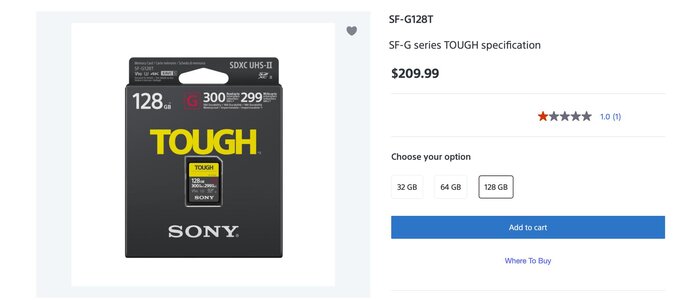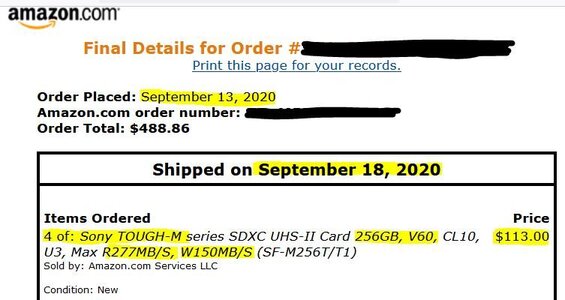Pro Member
- Followers
- 0
- Following
- 3
- Joined
- Jun 21, 2021
- Posts
- 39
- Likes Received
- 15
- Trophy Points
- 0
- Name
- Doug
- Country
- United States
- City/State
- Austin, Texas
I'm awaiting delivery of my new Sony a7r IVa and want to use the fastest but most cost-effective memory cards. Anyone have advice? It appears there are cards that are 300Mbs, so that would seem to be the fastest.
Thanks
Thanks
Last edited:


